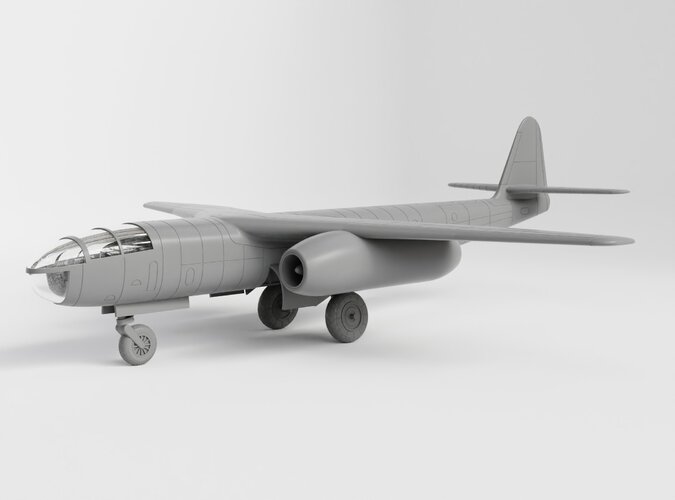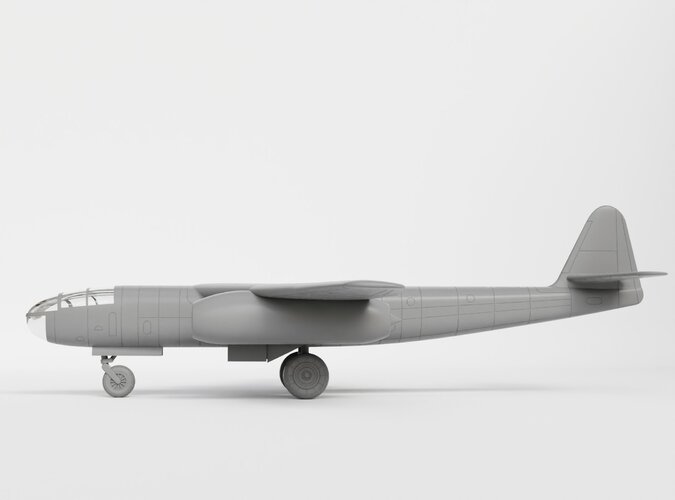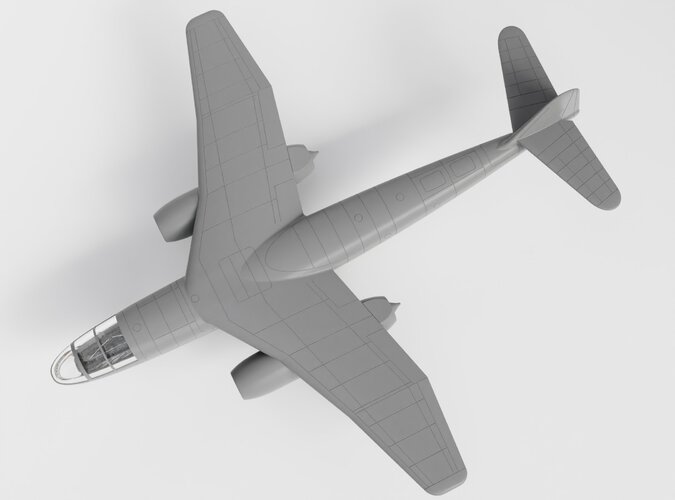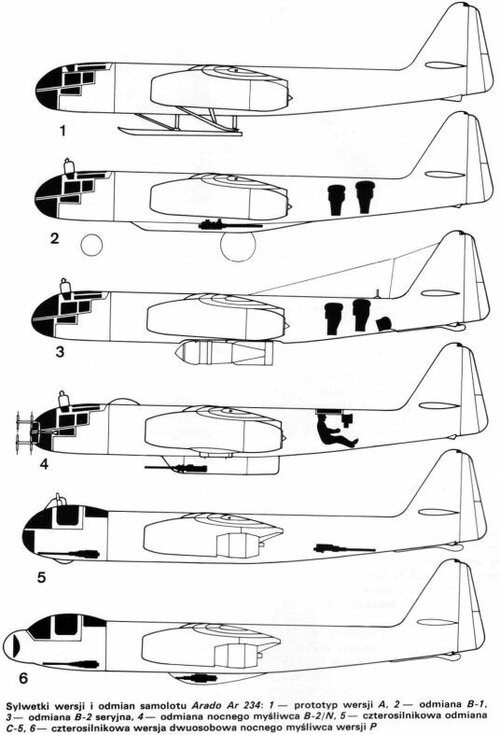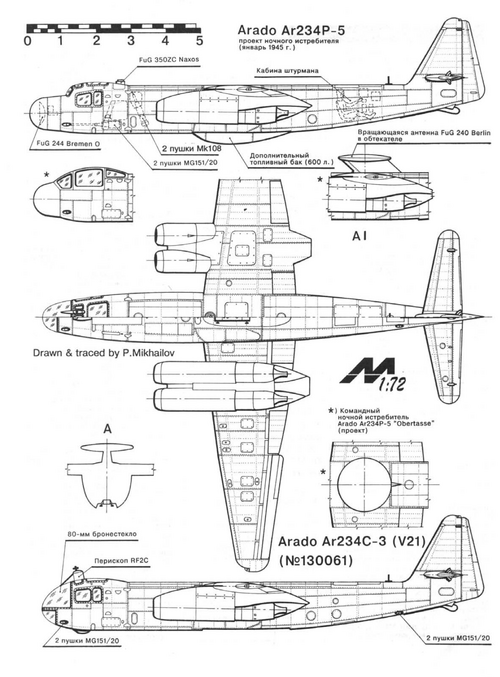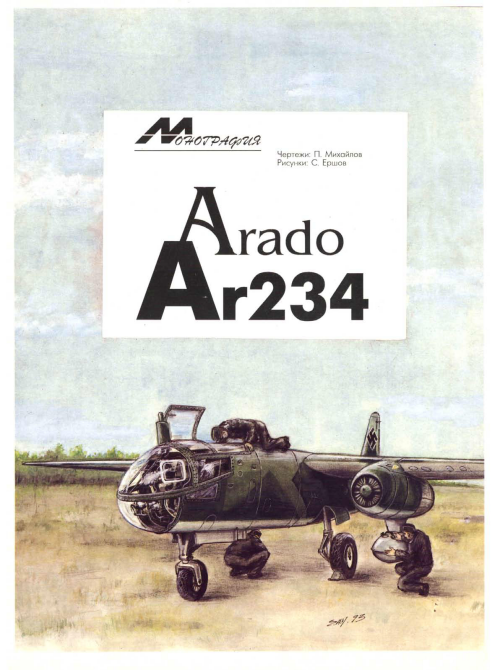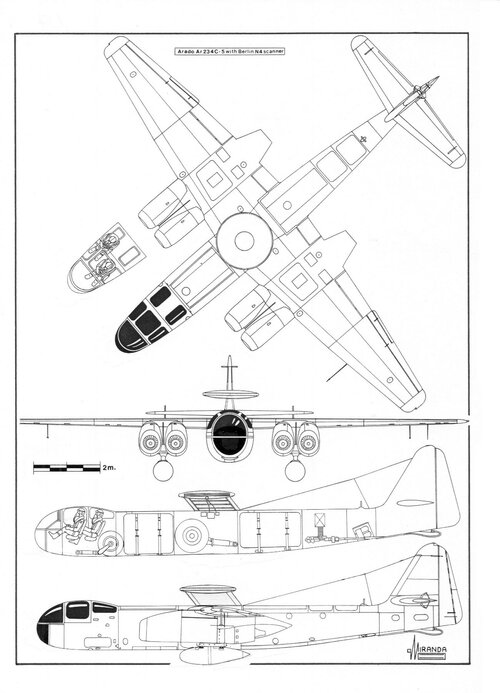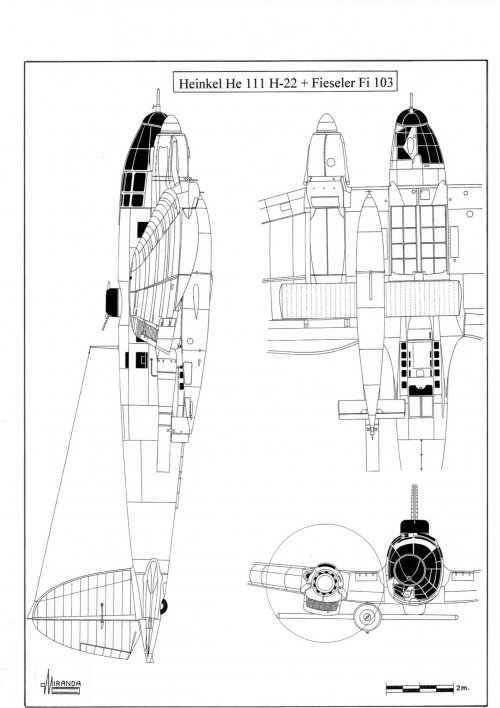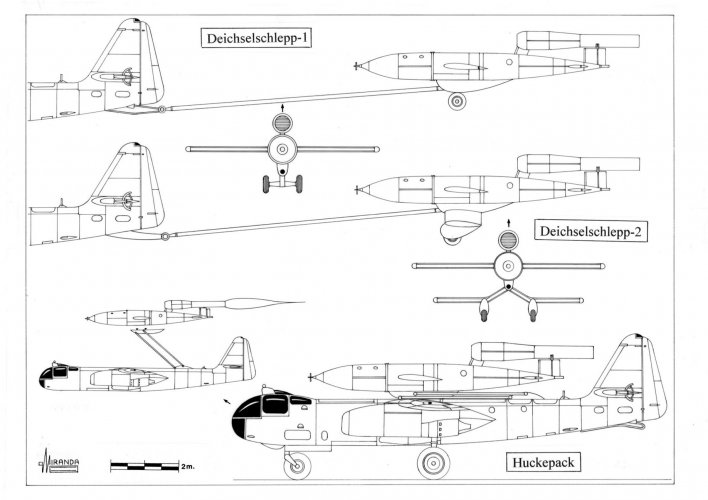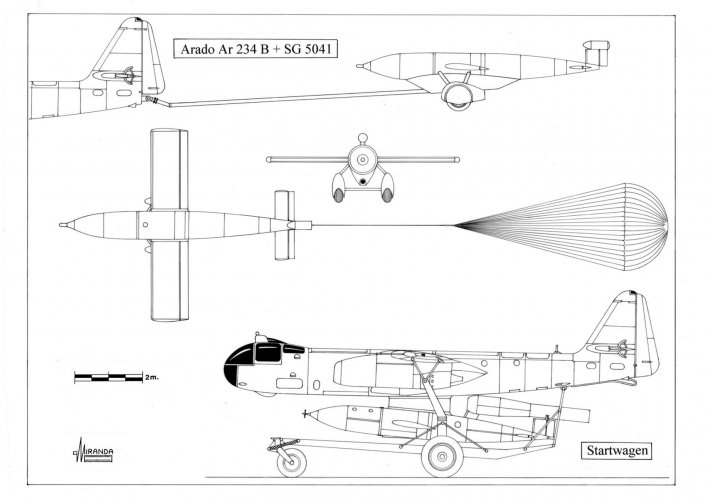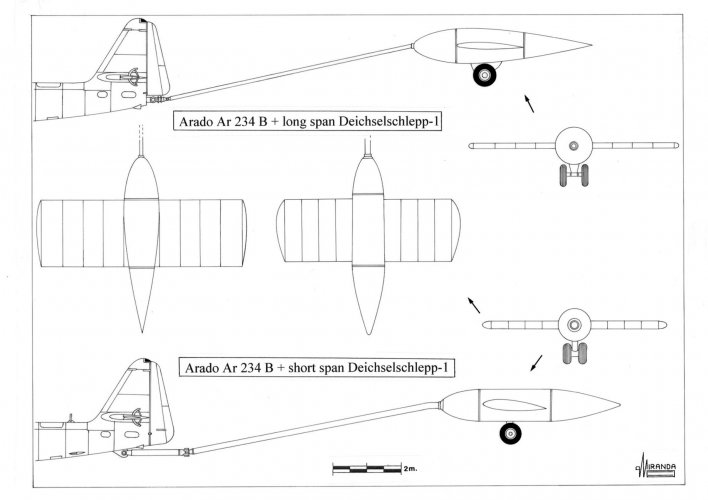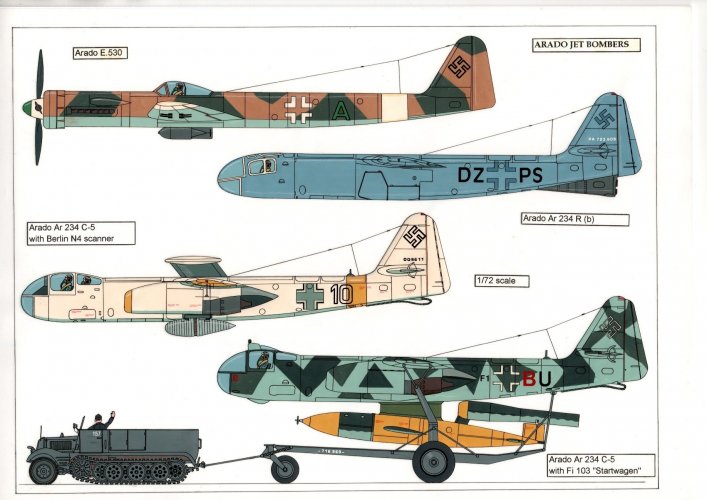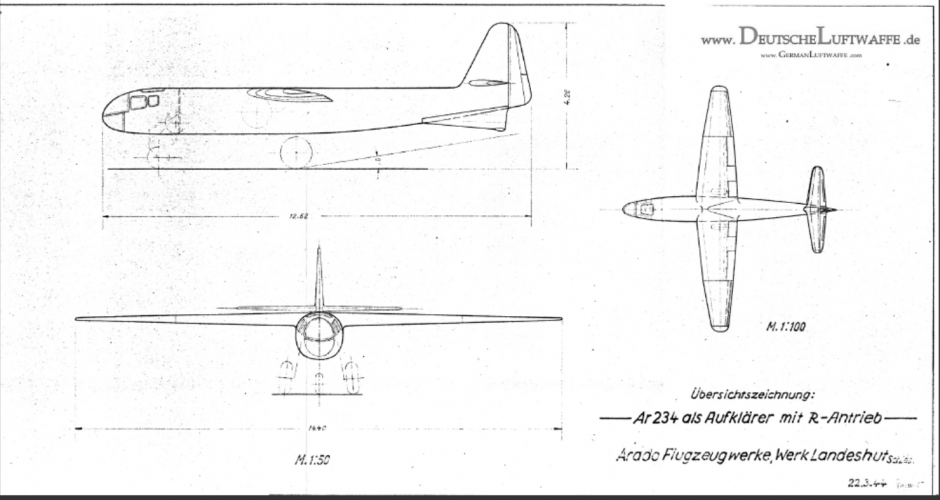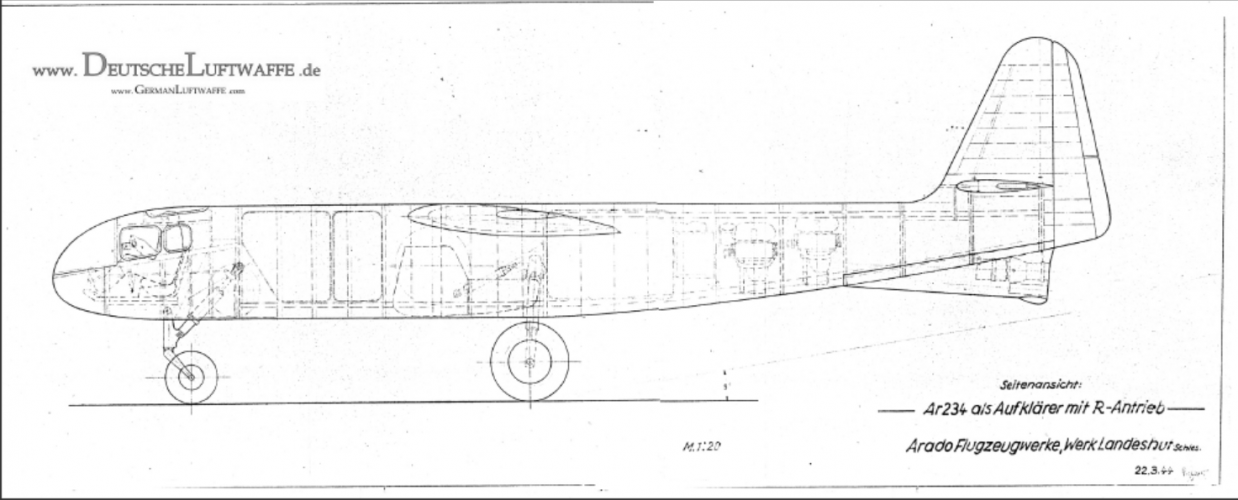I remember seeing something about an Ar 234 project capable of launching V-1 missiles. Does anyone have info?
During the weeks that followed the D-Day, the ground forces of the Allies neutralized in their advance numerous launch sites of V-1 cruise missiles in northern France.
When the units of the
Wehrmacht retreated eastward, the new frontiers of the Reich got progressively further from London. The V-1s launched from central Netherlands, with its maximum range of only 240 km, could no longer reach the British capital.
On July 9, 1944 the
Luftwaffe intended to continue its bombing offensive launching the V-1 missiles from Heinkel He 111 obsolete bombers.
A number of He 111 H-21 bombers already on the assembly line, were modified to H-22 configuration to carry a single V-1 on a rack under either port or starboard wing. Other H-16 and H-20 series aircraft were also converted at Heinkel-Oschatz facilities.
The units in charge of the launches were III./KG3 (July 9 to September 15, 1944) and KG 53 (September 16, 1944 to January 14, 1945).
Taking off with great difficulty from the Dutch airfields of Gilze-Rijen, Venlo and Zwischenahn, these bombers ventured far into the North Sea to launch their missiles against English cities.
The V-1s came from the east, thus taking by surprise the British defenders that expected them from the south. At best, the
Chain Home stations could give six minutes warning before the flying bomb reached the British coast.
To cope with the air-launched threat, in October 1944 the British defense system had to re-orientate with the center on the Thames Estuary.
Between July 1944 and January 1945 these Heinkels launched 1,600 missiles against London, Southampton, Gloucester, Manchester and Paris but the accuracy of air launches was far inferior to that of those made from ground sites.
The bomber flying at 160 ft. (50 m) over the sea to evade detection by coastal radar, and climbed to 1,500 ft. (450 m), the missile launch altitude.
During this maneuver, the Heinkel was detected by the
Chain Home stations at North Foreland, St. Margaret Bay and Foreness, by radar ships and Flak cruisers patrolling in the middle of North Sea and by several
Wellington bombers from Coastal Command fitted with ASV radars.
After the bomber was plotted in the control room of the radar station, the Fighter Control would warn the Allied night fighters that where in the area (about 25 miles away) vectoring them toward the intruder.
The air launch it was a dangerous work as some missiles exploded prematurely and others beat the bomber tail after the launch, because the air turbulence.
In mid-December 1944, the KG 53 lost twelve bombers in two days to launch accidents, a total of 77 H-22 bombers were destroyed by accidents or shot down by Allied fighters.
From the strategic point of view, the low frequency of launches was useless and the old Heinkel was easy prey for the all-weather interceptors
Mosquito and
Black Widow that searched them over the sea.
The
Luftwaffe needed a faster launch plane and in October 1944 the DFS Institute began experiencing different systems of high-velocity towing so that the V-1s could be carried by the new Arado Ar 234C jet bombers. The system was named
Deicheslschlepp and consisted of a rigid tow bar with joints at both ends that hold together the two planes.
With the
Huckepack configuration the missile was transported on the back of the bomber. During launch, a system of bars held the aircraft together (without the risk of collision by turbulence) whilst the pulsejet ignition was made.
Startwagen consisted of a three wheeled cart on which the launch bomber was positioned, with folded undercarriage, and the missile within an aerodynamic pod that was suspended under the fuselage.
The production of the Ar 234 was slow because of the shortage of turbojets and only some prototypes of the C-Series were finally manufactured in 1945.
This V-1 version was to be used in
Pulkzerstörer attacks steered by a new DFS radio-command from the Ar 234 pilot.
The
Deicheslschlepp system was initially designed to tow auxiliary fuel tanks.




